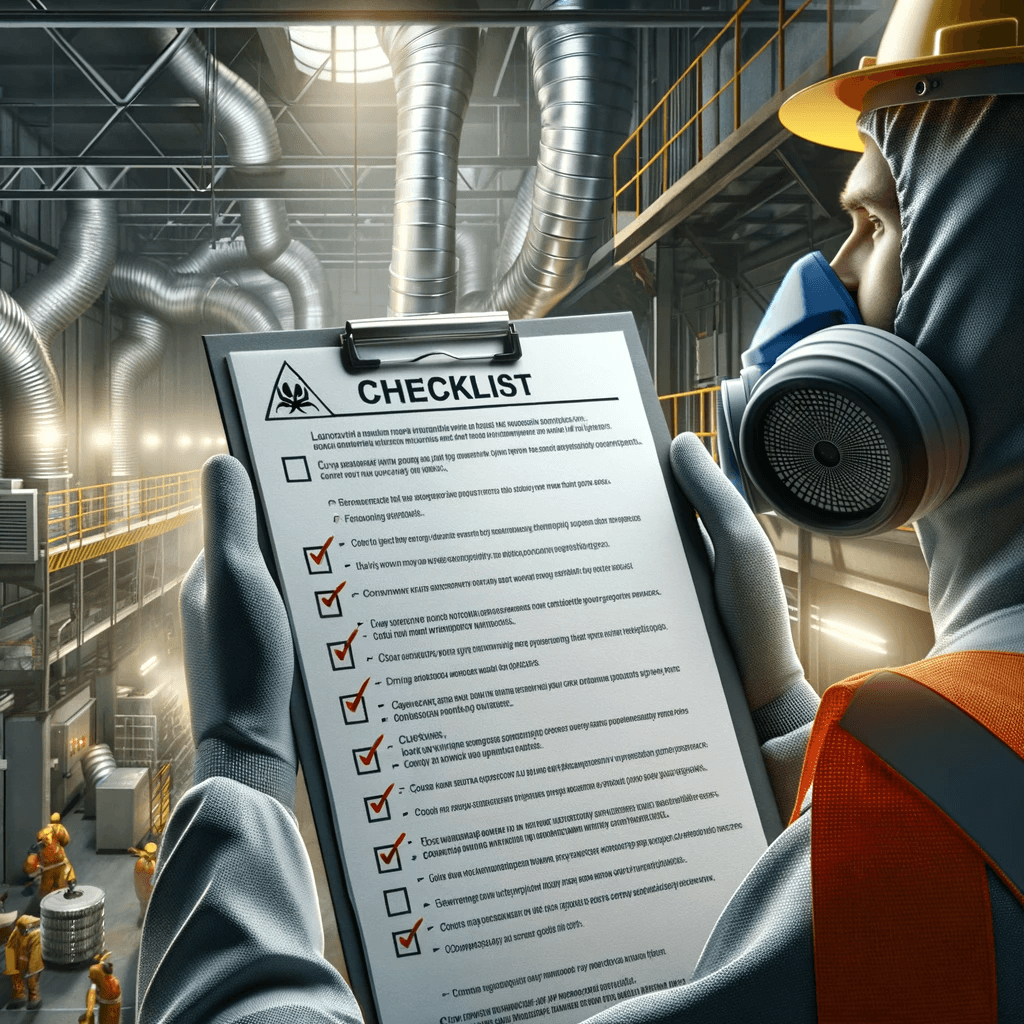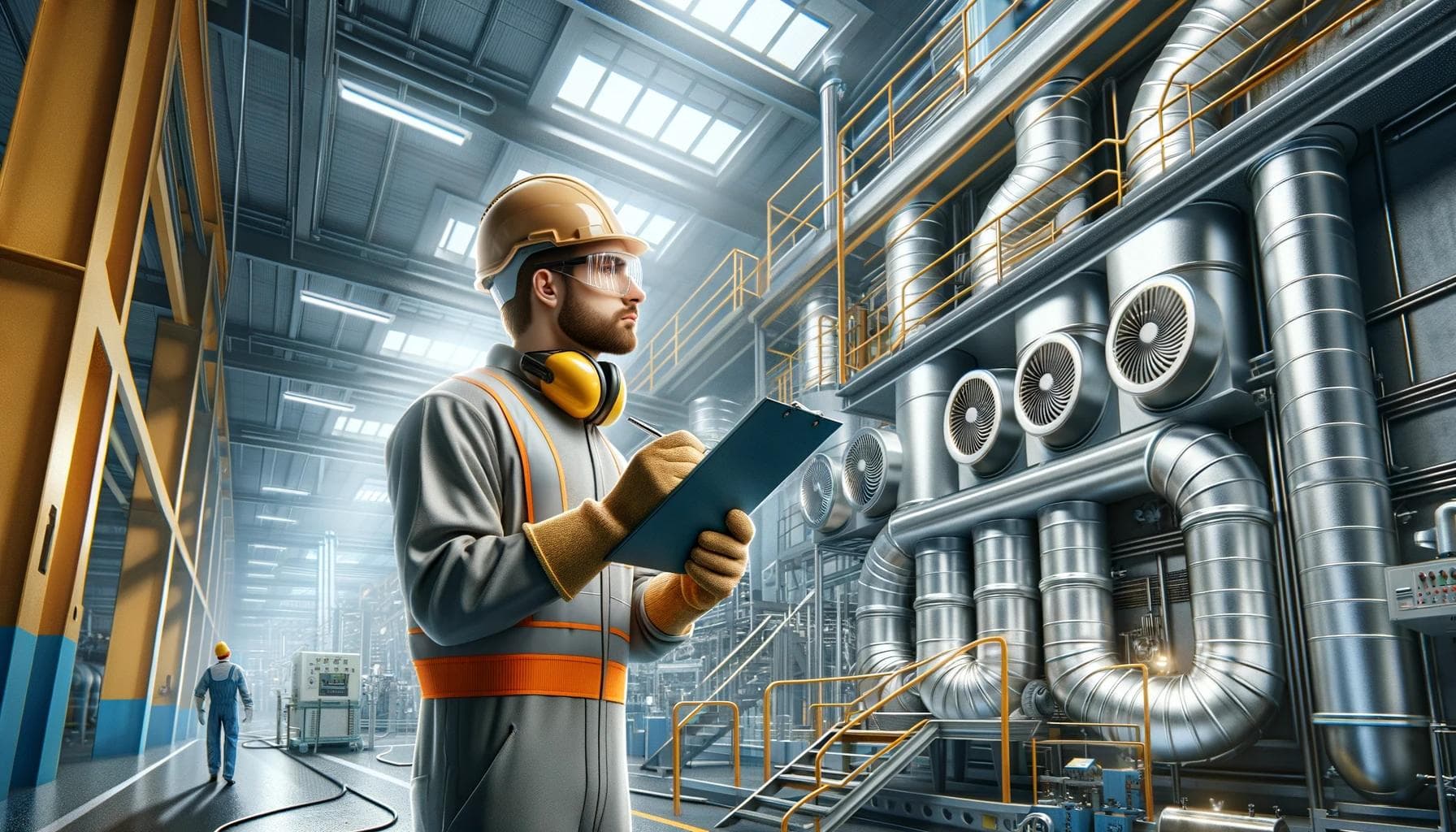Cost-Benefit Analysis of Preventive LEV Servicing
The Importance of Local Exhaust Ventilation Systems
Local Exhaust Ventilation (LEV) systems play a crucial role in maintaining workplace safety by controlling the emission of hazardous substances. A well-functioning LEV system not only ensures compliance with health and safety regulations but also protects employees from potential health risks. As an employer or facility manager, you're responsible for the well-being of your workers and the operational efficiency of your workplace.
Understanding Preventive LEV Servicing
Preventive LEV servicing involves regular inspections, maintenance, and repairs to ensure that these systems operate effectively. The goal is to anticipate and rectify any potential issues before they escalate into major problems. Regular servicing can help you avoid costly downtime, reduce the risk of non-compliance fines, and most importantly, safeguard your employees' health.
The Benefits of Regular LEV Servicing
- Compliance with Health and Safety Regulations: By ensuring your LEV systems are well-maintained, you adhere to the legal requirements set forth for workplace safety, thus avoiding penalties.
- Improved System Efficiency: Clean and well-serviced LEV units operate more effectively, helping to maintain a contaminant-free work environment.
- Cost Savings: Preventative maintenance can significantly reduce the likelihood of expensive repairs or replacements in the future.
- Healthier Workforce: A well-functioning LEV system contributes to a cleaner air supply, reducing the risk of respiratory issues among your employees.
Cost Implications of Preventive Servicing
While there is an upfront cost associated with regular LEV servicing, the long-term financial benefits cannot be overstated. Downtime due to LEV system failure can halt production, leading to significant financial losses. Moreover, the cost of emergency repairs often exceeds that of scheduled maintenance. By investing in preventive servicing, you are essentially investing in the continuous productivity and safety of your workplace.
Performing a Cost-Benefit Analysis
Conducting a cost-benefit analysis allows you to weigh the expenses of preventive LEV servicing against the potential costs of neglect. Here's how you can perform a thorough analysis:
1. Calculate Preventive Servicing Costs
Estimate the annual cost of regular LEV servicing based on your provider's rates.
Include the cost of potential parts and minor repairs identified during servicing.
Factor in the costs associated with servicing downtime, if any.
2. Estimate the Costs of Neglect
Assess the average cost of emergency repairs for LEV systems.
Consider the financial impact of production downtime caused by unexpected LEV failures.
Account for potential fines and legal fees from health and safety violations.
Estimate the cost of health claims or compensation from employees affected by inadequate ventilation.
3. Analyze the Data
Compare the annual cost of preventive servicing with the estimated costs resulting from neglect. In most cases, the benefits of preventive servicing far outweigh the risks and costs associated with system failures and health incidents.
The Role of LEV Testing in Preventive Maintenance
As part of a comprehensive preventive maintenance plan, regular LEV testing is essential. This ensures that the system is not only visually in good condition but also operating at peak performance, as per the regulatory standards. LEV testing by a competent person can help identify issues that might not be apparent during routine servicing, thereby offering an additional layer of protection.
Choosing the Right Service Provider
Selecting a knowledgeable and experienced service provider is crucial for effective LEV maintenance. Providers like WBT Services Ltd, with expertise in industrial systems, can offer tailored servicing and testing plans to fit the unique needs of your facility. With their support, you can be confident in the reliability of your LEV systems and the safety of your workforce.
Conclusion
Maintaining your LEV systems through regular preventive servicing is not just a regulatory obligation; it's a strategic investment in your business's operational efficiency and employee health. By conducting a cost-benefit analysis, you can clearly see the financial advantages of this proactive approach. Remember, the cost of preventive maintenance is a fraction of the potential losses from system failures and health-related incidents. Take action today and ensure the longevity and efficiency of your LEV systems with professional servicing and testing.
FAQs
1. What are the key benefits of regular Local Exhaust Ventilation (LEV) servicing?
Regular LEV servicing provides several critical benefits including compliance with health and safety regulations, improved system efficiency, cost savings by preventing expensive repairs, and promoting a healthier workforce by reducing respiratory issues.
2. How does preventive LEV servicing contribute to cost savings for a business?
Preventive LEV servicing helps avoid costly downtime and emergency repair expenses by maintaining the system's efficiency. Scheduled maintenance is generally less expensive compared to the higher costs associated with correcting system failures, not to mention the potential for fines due to non-compliance and health claims from employees in an inadequately ventilated environment.
3. What should be included in a cost-benefit analysis of preventive LEV servicing?
A thorough cost-benefit analysis should include the annual cost of regular LEV servicing, minor repair costs, and any associated downtime. It should also estimate the financial impact of emergency repairs, production losses due to system failures, potential fines, legal fees, and the cost of health claims resulting from inadequate ventilation. By analyzing this data, businesses can make informed decisions about their maintenance strategies.
Key Takeaways
Firstly, Local Exhaust Ventilation (LEV) systems are essential for ensuring workplace safety and employee health by minimizing exposure to hazardous substances. Regular preventive LEV servicing not only helps in complying with health and safety regulations but also maintains a contaminant-free work environment, which is imperative for the workforce's well-being.
Secondly, the benefits of such servicing span across legal compliance, enhanced system efficiency, avoidance of unexpected costly repairs or replacements, and ensuring a healthier workforce. These advantages collectively contribute to the cost savings for the business. Investing in preventive servicing is a strategic choice that aids in maintaining continuous productivity and avoiding potential fines or legal actions due to non-compliance.
Lastly, performing a comprehensive cost-benefit analysis is crucial for understanding the financial implications of preventive servicing versus the costs of neglect. This analysis should consider regular servicing expenses, estimated emergency repair costs, the financial impact of downtime, and health-related costs associated with poor ventilation. The analysis typically reveals that the financial benefits of regular maintenance far exceed the potential costs of neglecting LEV systems. Additionally, selecting a competent service provider is key to ensuring the effectiveness of LEV maintenance and testing.


